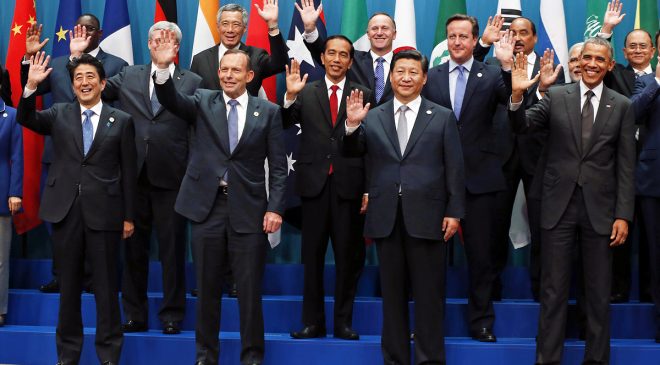 |
| Send him mail. |
“One Voluntaryist’s Perspective” is an original column appearing most Mondays at Everything-Voluntary.com, by the founder and editor Skyler J. Collins. Archived columns can be found here. OVP-only RSS feed available here.
Class analysis is a useful tool toward the stratification of society in order to understand different perspectives on political or economic conflict. What does voluntaryism have to offer? Let me first review a couple of class analyses, Marxist and Austrian, and then I’ll offer a voluntaryist expansion on the latter.
Marxist Class Analysis
Both Hans Hoppe and David Osterfeld give great critiques of the class analysis of Karl Marx. In brief, mankind’s is a history of class struggle, rulers over the ruled, or in economic terms, exploiters over the exploited. While this is obviously true when considering slavery and feudalism (kings/nobles over serfs), Marx argued that this is no less true for capitalism. According to Marx, capitalists (and entrepreneurs) exploit workers by paying them wages lower than what their labor is really worth, as evidenced by the profits that capitalists make after selling their final goods for higher than what it cost them to pay workers. Further, capitalists use their economic power to take control of the state in order to diminish competition by increasing the costs of entrepreneurship. The ruling class, then, are the capitalists and entrepreneurs, and the ruled or those the ruling class exploit, the workers.
Karl Marx makes at least two errors in his class analysis, according to Austrian School economists. The first is his utilization of the fallacious labor theory of value (LTV). The LTV had it’s origins in religious philosopher Thomas Aquinas, and later, influential economist Adam Smith, and is a theory of value “that argues that the economic value of a good or service is determined by the total amount of labor required to produce it.” In other words, the monetary value of something can be objectively determined by measuring it’s labor inputs. It’s fallacious because value cannot be objectively determined by measuring anything. Instead, value is determined on the basis of personal preference; it is subjectively determined in the minds of each and every person. It’s the economic equivalent of the saying, “Beauty is in the eye of the beholder.” Therefore, what capitalists are able to sell their final goods for is a determination made by consumers, without regard for labor inputs (except for during the determination to produce the good at all and the anticipation of profits). The latter theory is called, obviously, the subjective theory of value.
Marx’s second and compounding error is his failure to understand and consider time preference. Time preference “is the assumption that, all else being equal, people prefer a given end to be achieved sooner rather than later.” This assumption is based on the praxeological action axiom (human action is the purposeful utilization of means over a period of time in order the achieve a desired end), because if people did not prefer a given end to be achieved sooner rather than later, they would not yet act. Marxism fails to consider the different time preferences of capitalists and workers. Worker time preference has it that they prefer less money sooner for their output. They are less willing to wait for the final good to be sold in order to make a higher return on their labor, and so they settle for what capitalists are willing to pay them, the difference being the reward for capitalists and entrepreneurs having a different time preference then workers. They are willing to wait for the final good to sell, and in the mean time deal with the risk and uncertainty that it will sell at all. And they still must pay for labor and capital inputs before they ever profit from worker production.
Austrian Class Analysis
While Marx erred based on the preceding, his belief that mankind experiences class struggle was essentially true. His bad economic reasoning pointed him toward blaming capitalists and entrepreneurs for the plight of the worker. Had he used better economic reasoning, he would see that any exploitation of workers came not through capitalist profits, which are earned through voluntary trade, but through rising costs to escaping labor created by economic regulations from the state. At their foundation, economic regulations are enforced by the use or threat of state violence. As the state claims and enforces an illegitimate monopoly on the provision of law and order, or on the legal use of force, the state is able to demand that individuals jump through regulatory hoops in order to enter certain industries as either capitalists, entrepreneurs, or workers, if they allow it at all. The difference between Marxist and Austrian class analysis, then, is in the former dividing the classes by economic power, while the latter dividing them by political power. I highly recommend the Hoppe and Osterfeld essays linked above as they provide greater clarification to what I’ve offered here. Let us now turn to voluntaryist class analysis.
Voluntaryist Class Analysis
Austrian class analysis is quite informative for voluntaryists. We, too, see class division in society along the line of political power. The ruling class are those who are allowed, by law, to initiate coercion against others. Those who are coerced – taxed, conscripted, regulated – are being exploited to the benefit of the ruling class. As stated previously, human action is the purposeful utilization of means over a period of time in order to achieve a desired end. The type of means utilized determine how one goes about achieving their desired ends. Albert Jay Nock, following Franz Oppenheimer, categorized means into two types: economic and political. Economic means are cooperative with our fellow humans, while political means are exploitative. The former involves voluntary trading, and the latter, coercive taking. If class analysis is a tool for understanding societal conflict, and societal conflict is a result of coercion by some over others, then voluntaryist class analysis posits that there are only two classes in society, those who use coercion to achieve their desired ends, and those who don’t.
All well and good, but I think that voluntaryism as a philosophy demands we take this analysis further. Why would anyone choose to use coercion over others? Why would political means be used in lieu of economic means? Two possible reasons: 1) the actor believes that political means are more likely to help him achieve his desired ends, and 2) the actor’s desired ends require the use of political means. On 1), this seems likely the result of a coercive upbringing. The actor was raised coercively by parents, teachers, and others, and so believes that coercion is a necessary tool in getting what one wants from others. He lacks the empathy prerequisite to preferring economic means due to his being dominated and coerced by others. Or, he lacks the prerequisite knowledge and wisdom to preferring economic means because he’s been indoctrinated by government schools into believing that some problems can only be prevented or solved through the use of political means, of coercion. On 2), this, too, seems likely the result of a coercive upbringing. The actor is suffering in some way internally from trauma experienced when younger and believes that one way to end his suffering is by releasing his rage onto others. In either case, the resort to coercion is the result of being a victim of coercion.
Conflict begets conflict, in other words. When parents use coercion over their children, they teach their children that it’s okay to use coercion over others, and also create suffering that the child may one day try to heal through the use of coercion. The cycle of coercion is not bound to the family. The child victims of parental and societal coercion are more likely to use coercion not only over their own children, but toward other adults, either directly through crime, or indirectly through politics. The ruling class is thus sustained through the widespread use of coercion, beginning in the home, and so the use of political means in the home over family members should feature prominently in a useful class analysis of overall society. This is the contribution made by voluntaryism.
Final Thoughts
Karl Marx got some things right in his explanation of historical class struggle. He came to the wrong conclusion because of faulty economic logic, which amounted to the claim that societal conflict looks like “rich vs. poor”. Austrian School economists have corrected that logic and given us a better conclusion, “the state vs. the rest of society”. My attempt here was to lend voluntaryist insight into the antecedents of the state, and to show why societal conflict is actually the result of the widespread use of coercion over others, starting in early childhood. “Coercivists vs. voluntarists” is a more accurate stratification of society as it concerns class struggle, in my opinion.
Read more from “One Voluntaryist’s Perspective”:



